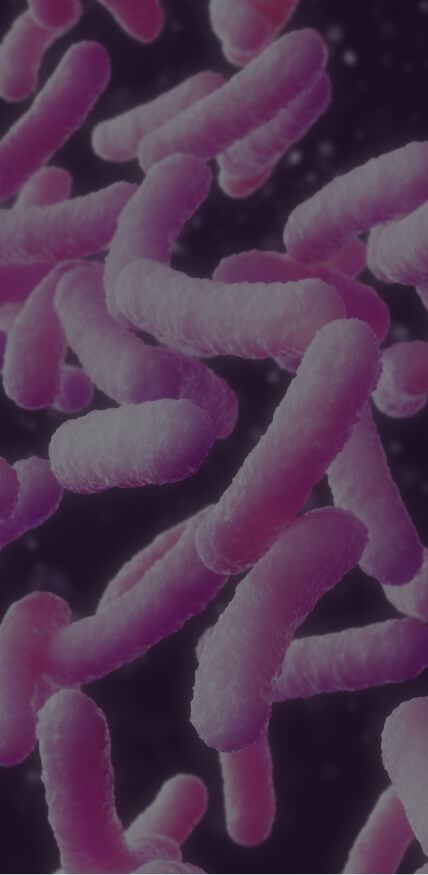The Plague Isn’t a Problem.
For Now.
HELP KEEP IT THAT WAY.
Believe it or not, there is no approved plague vaccine. Research studies are enrolling healthy 18- to 55-year-olds for vaccine testing to keep the plague at bay.
Research studies are enrolling healthy 18-55-year-olds for investigational vaccine testing.
Qualified volunteers may receive:

No-cost study-related care
from local doctors and specialists

Study medication
at no cost
The satisfaction of supporting
the men and women of the
armed services
Research studies are enrolling today!
How does study matching work?

Answer some questions
about your health

Tell us a little bit about yourself

Connect to available studies
in your area
The plague is a particularly nasty disease caused by a zoonotic bacterium called Y. pestis. You’ve probably heard it called the Black Plague or the Black Death but that refers only to the Bubonic form, which caused millions of deaths in Europe starting in 1347.
In total there are three versions: Bubonic, Septicemic, and Pneumonic. The severity of the disease is unquestioned. While survivable with today’s medicine, one of the hallmarks of plague is the development of gangrene in the extremities, which can leave people scarred and disabled for life. Also, plague may be more prevalent in developing countries without access to first world medicines, so a vaccine could go a long way to improving survivability in these areas. But it’s the Pneumonic form that’s especially frightening. It is almost always fatal. If this highly virulent and deadly version of the Y. pestis bacterium is breathed in, by the time symptoms are recognized, it is usually too late to treat.
In the United States, a common belief is that the plague is a foreign disease or that it has been eradicated. Neither is the case. There has been at least one reported case of the plague in the U.S. every year since 2000. The highest number was 17, reached in 2006. Tragically, four people died from the plague in 2015.
The plague does not discriminate by any measure. It infects people of any age from infants to the elderly; male, female, non-binary; and every race and socioeconomic class. Most cases occur in those 12-45 years old. The most at-risk include veterinary professionals, outdoor enthusiasts, and hunters. If there is good news, it’s that it currently only affects half the country. Except for an isolated, lab-associated case in Illinois, cases in the U.S. are clustered in western regions, particularly the rural southwest.
So how does the plague spread? Typically, it’s the mighty flea to blame. Vermin like chipmunks, mice and squirrels are common carriers of the plague. When a flea feeds on an infected host, it becomes a carrier and can interact with people directly or through a pet like a cat or dog.
Another way to contract plague is by handling the infected skins, flesh or fluids of infected animals. Obviously, veterinarians and hunters should be especially careful when handling animals.
Breathing in infected droplets is the least common form of transmission. This occurs when someone who has plague pneumonia coughs droplets into the air that are subsequently breathed in by another person. Infected cats also transmit the disease this way.
When a flea feeds on an infected host, it becomes a carrier and can interact with people directly or through a pet like a cat or dog.

Are Important
#1
Viruses and bacteria have not gone away, nor have the diseases they cause
COVID-19 made us all too aware of the huge impact a virus can have on society. There are many other viruses and bacteria that still exist and can be passed on to those who are not protected by vaccines.

Are Important
#2
Vaccines can help keep you healthy and are as important to your overall health as diet and exercise
The Centers for Disease Control recommends that you be vaccinated throughout your life to protect yourself from infections. Like eating healthy foods, exercising, and getting regular check-ups, vaccines play a vital role in keeping you healthy. Vaccines are one of the most convenient and safest preventive care measures available.

Are Important
#3
Vaccination can mean the difference between life and death
Vaccine-preventable infections can be deadly. Every year in the US, prior to the COVID-19 pandemic, approximately 50,000 adults died from vaccine-preventable diseases. More than 500,000 people died in the US from COVID-19.

Are Important
#4
Vaccines are safe and will not cause the diseases they are designed to prevent
Vaccines are designed to lessen or prevent severe illness, and in some cases prevent it completely. The US has a robust approval process to ensure that all licensed vaccines are safe. Potential side effects associated with vaccines are uncommon and much less severe than the diseases they prevent.

Are Important
#5
Young and healthy people can get very sick, too
Infants and older adults are at increased risk for serious infections and complications, but vaccine-preventable diseases can strike anyone. If you are young and healthy, getting vaccinated can help you stay that way

Are Important
#6
Vaccine-preventable diseases are expensive
Diseases not only have a direct impact on individuals and their families, but also carry a high price tag for society as a whole, exceeding $10 billion per year. An average flu illness can last up to 15 days, typically with five or six missed work or school days. Adults who get hepatitis A lose an average of one month of work.

Are Important
#7
Protecting yourself means protecting others
When you get sick, you can put others at risk too. And not just your immediate family and friends – neighbors, colleagues and anyone you come into contact with. When you get vaccinated, you are protecting not only yourself and your immediate family, but also those in your community who may not be able to be vaccinated. Plus, getting sick from a vaccine preventable illness can cause missed work and not being available to others who depend upon you – such as children or older parents

Are Important
#8
Many new vaccines are in development
Vaccines to protect against COVID-19 are authorized for emergency use and many additional types of vaccines are currently being studied. Research trials are also focused on vaccines for Plague, a bacterial infection that is commonly fatal if not treated.
How Does Study Matching Work?
Remember,
Telehealth visits are available.
Odds are you’ll never get the plague, but it’s still around in high-risk areas.
That’s why we’re trying to keep the plague at bay.
See if you qualify for this investigational vaccine clinical research study.
Another way to contract plague is by handling the infected skins, flesh or fluids of infected animals.
Obviously, veterinarians and hunters should be especially careful when handling animals.